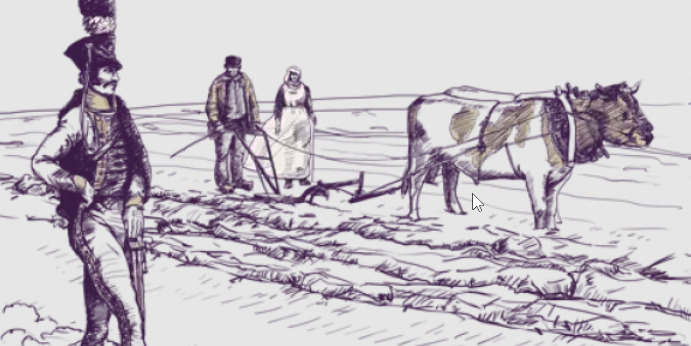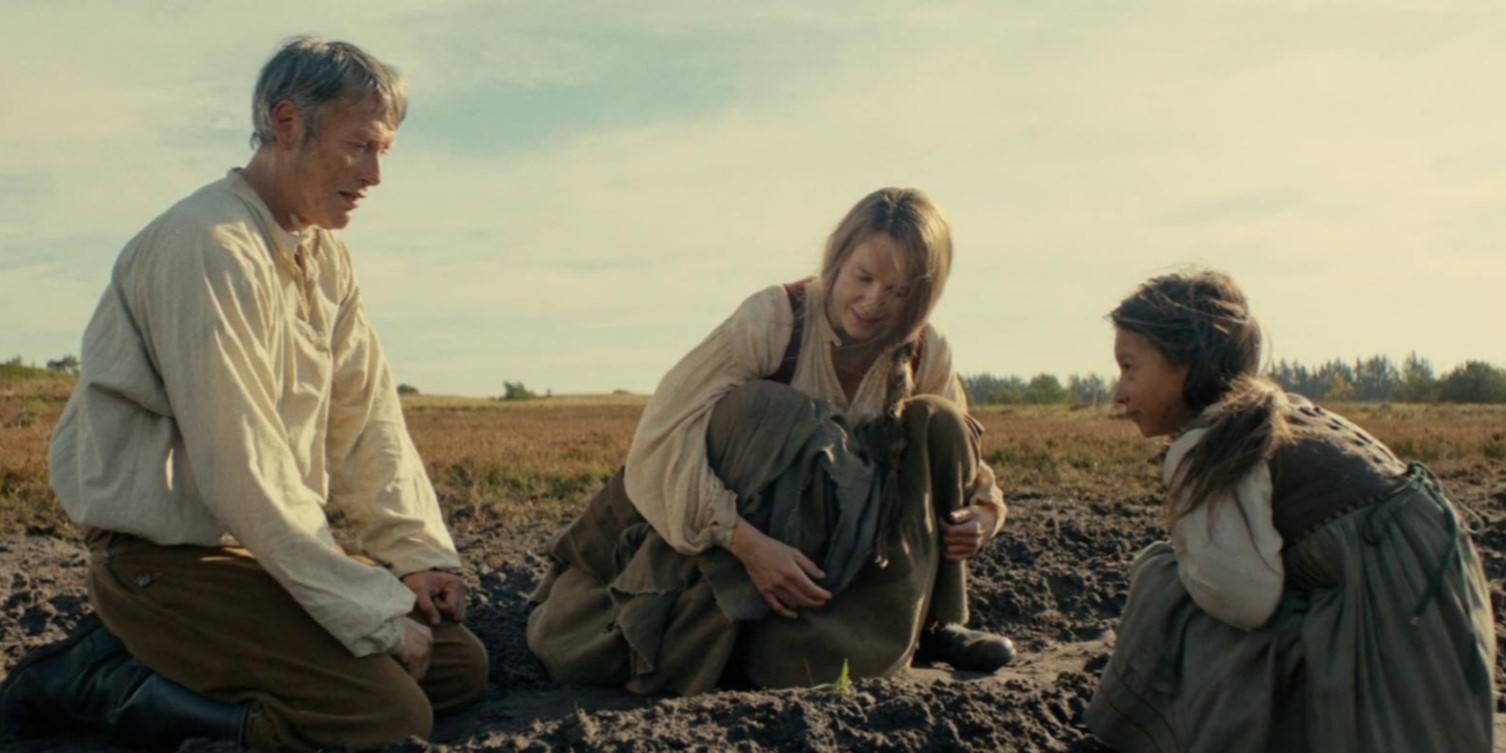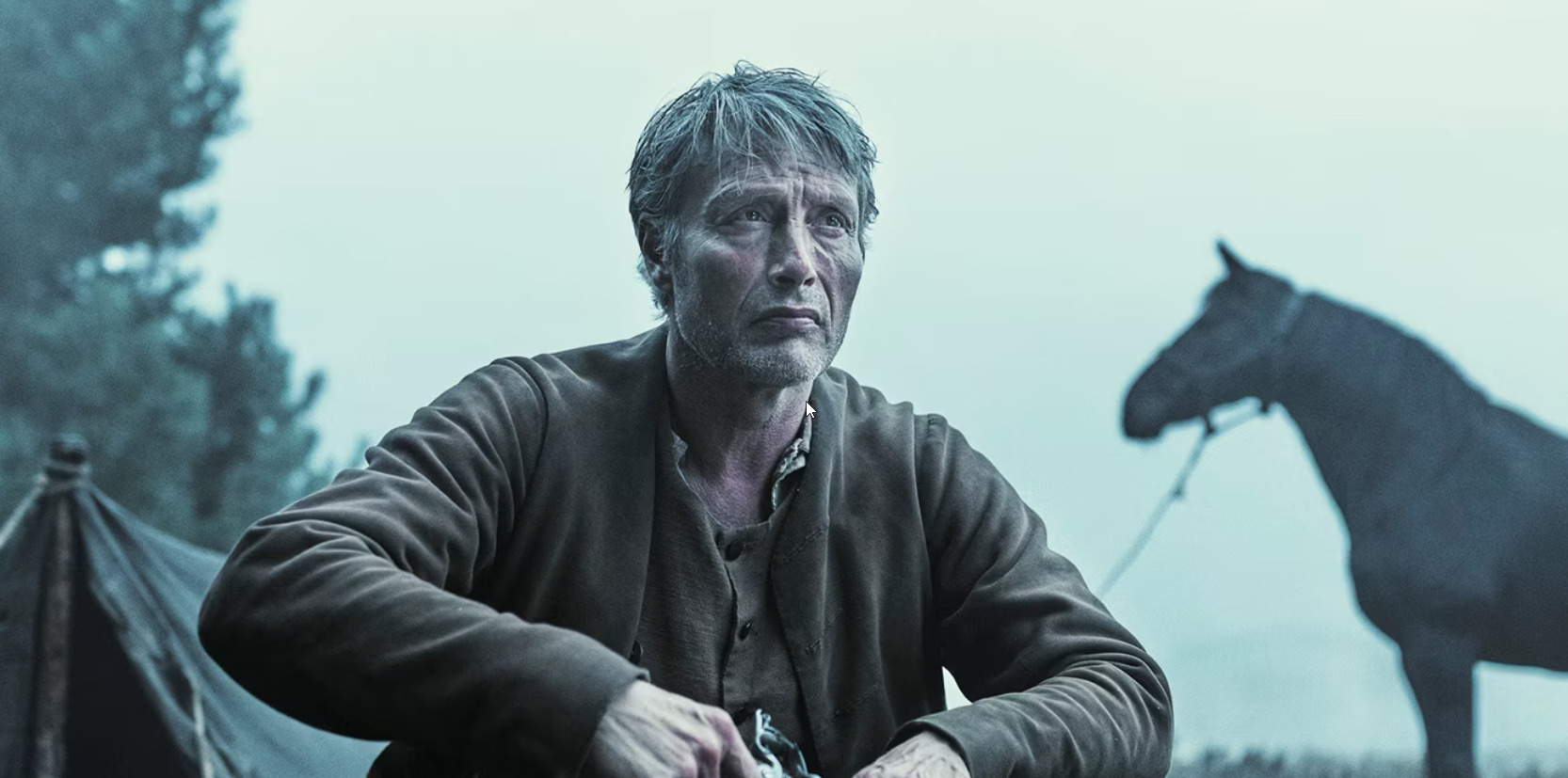The historical epic drama ‘The Promised Land’ introduces us to Ludvig Kahlen, a retired soldier with a burning ambition in his heart. He seeks to cultivate the Jutland heath, a barren and inhospitable landscape, hoping to gain a title and wealth for the monumental achievement. When travels to the region with a royal order, a local magistrate, Frederik De Schinkel, asserts his right over the wildlands. He withholds a workforce from Kahlen, making him rely on two serfs, Johannes Eriksen and Ann Barbara, who seek to escape Schinkel’s brutality. As Kahlen gets closer to achieving a successful harvest from the land, Schinkel’s ploys and provocations grow increasingly overt, making his mountainous task seemingly impossible.
The film, also known as ‘Bastarden,’ drips with atmospheric storytelling and authenticity under the direction of Nikolaj Arcel, taking us back to 18th-century Denmark’s Jutland. As the stellar performances and haunting backdrops bring the narrative to life, one can’t help but ask the question – did the story of Ludvig Kahlen actually take place?
The Promised Land Is Based on a Book which is Inspired by True Events
‘The Promised Land’ is directly based on the 2020 novel, ‘The Captain and Ann Barbara’ or ‘Kaptajnen og Ann Barbara’ by Ida Jessen. The book itself takes inspiration from the life of 18th-century Danish Captain, Ludvig von Kahlen, one of the first cultivators of the Jutland heath. However, with little information available on the historical figure, the film was based on the novel, which presents a fictionalized version of the true events with new characters and scenarios introduced.

When asked about how closely bound to history he felt in making the film, director Nikolaj Arcel replied, “Very little is known about Ludvig Kahlen after he goes off to the heath, so there is very little information about him in the period of our film.” He explained, “I was adapting a work of fiction based on true events. So I was loyal to the book first and to Ida Jessen’s vision. And some of the characters in the book she made up completely. Ludvig is real. Frederik de Schinkel is real. And he really was this kind of a crazy maniac.” The filmmaker chose not to stick to sparse historical records and instead adapted the fictional account of the book. This was done primarily to include the compelling characters and events that were created in the novel.
The historical Ludvig Von Kahlen was alive in the 18th century, the same time period seen in the film, and spent his early days working in agriculture and gathering experience as a surveyor. He joined military service with a German Holstein regiment, and during his time as a lieutenant, became interested in cultivating the Jutland heath. His proposals to the Rentekammeret (treasury) to finance an expedition to the barren region were dismissed until he presented detailed calculations involving settlers. If Kahlen were able to cultivate the land and create a settlement, it would mean that the monarchy would gain increased tax revenue as the settlement expanded over the years. Thus his proposal was approved by Frederick V, the king of Denmark and Norway, and Kahlen ventured to the heath in 1755.

Known to be an eccentric man, Kahlen built a house and pronounced it the King’s house, Kongenshus, in honor of the generosity shown to him by Frederick V. He then went to his home dutchy of Mecklenburg to gather countrymen for the project. The first German colonists, a few families, arrived in 1759. However, with the harsh conditions of the heath, they fled the region within a week. Kahlen then tried to enlist local workers, who lost heart as well. The stubborn pioneer ultimately gave up the task of taming the heath after eight years of hard work. He went on to join the army once again and became captain of a military unit in Fladstrand.
Thus when compared to actual accounts, besides Kahlen himself, all the characters of the film are fictional, along with the remarkable progress that the movie version of Kahlen makes in cultivation. Ludvig von Kahle became a military man again towards the end of his life, while his tale in the film begins with his retirement as a captain from the German army. During the 18th century, the Danish empire was comprised of a composite of states far greater in land area than today’s Denmark. The King of Denmark at the time held the German Dutchy of Holstein, making him a German Prince as its Duke. As a result of close relations, Danish troops were frequently deployed to support German allies or to participate in military campaigns in the German territories.
‘The Promised Land’ spins an epic historical tale of ambition, resilience, and sacrifice, drawing its authenticity from real-world locations and circumstances prevalent in the era. While Ludvig von Kahle was a real person, the film fictionalizes his story and adds characters based on Ida Jessen’s ‘The Captain and Ann Barbara.’
Read More: The Promised Land: Exploring All Filming Locations


You must be logged in to post a comment.